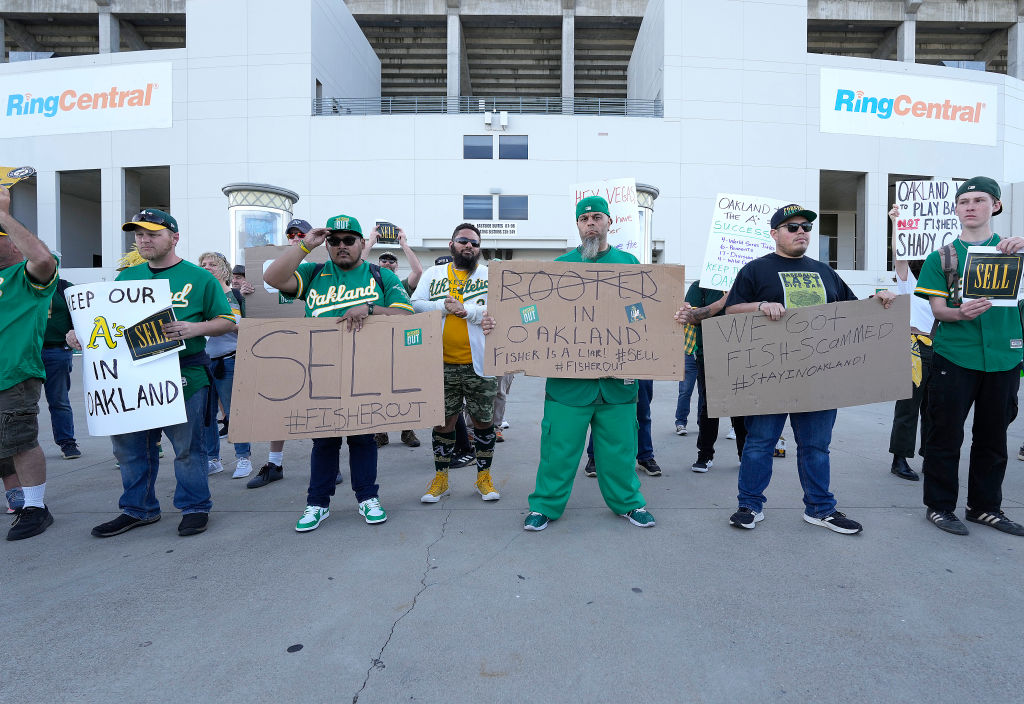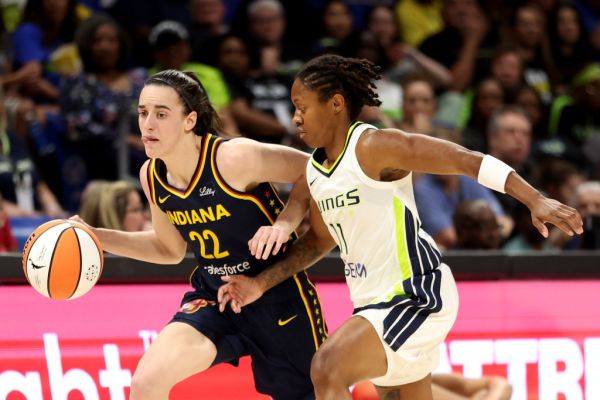Las Vegas has scored professional football and hockey teams in the past five years and now is on the verge of landing an MLB team: the Oakland Athletics. The Atomic City would be the fourth site for the Athletics franchise since its founding more than a century ago in Philadelphia—making the team older than its new home.
Moving a professional sports franchise is a heavy lift, and the process has just started.
Why leave Oakland?
The driving factor behind the team’s likely move to Las Vegas is its stadium. For more than two decades, the A’s have sought a replacement for the Oakland-Alameda County Coliseum, the team’s home since coming to Oakland in 1968. (It’s currently the fifth oldest MLB ballpark.)
In a letter to the executive director of the coliseum authority last year, Vice President of Stadium Operations David Rinetti outlined a bevy of issues, including corroding seats, feral cats, a nearby homeless encampment, and ongoing plumbing problems.
“It’s kind of repulsive, honestly,” then-Oakland A’s player Jed Lowrie said in 2013 after sewage flooded parts of the stadium for the second time that year.
Within the last decade, the Oakland Coliseum has endured further sewage troubles, water flooding, light outages, possum infestation, dead mice in a soda machine, and even a section of the outfield wall collapsing.
The city of Oakland and the Athletics’ previous discussions for a new stadium deal in Oakland’s port area, near Howard Terminal, seem to have only resulted in animosity.
“I think that the real question is, what is it that Oakland was prepared to do?” MLB Commissioner Rob Manfred said recently. “There is no Oakland offer, OK? They never got to a point where they had a plan to build a stadium at any site.”
“That is total BS,” Dan Kalb, an Oakland city councilmember, tells The Dispatch regarding Manfred’s remarks. “He should be ashamed for making that accusation.”
“The problem is that we didn’t have a partner on the other side that was willing to give us a fair deal. We bent over backwards to go so much closer to their positions,” Kalb says. “They still said no. They kept asking for more and more, which raises the question: How serious were they?”
The Oakland Athletics have had one of the most committed fanbases in baseball. The A’s have won four World Series titles since moving to Oakland but last made the playoffs in 2020. They have since nosedived, trading away much of the young talent that usually would be the building blocks for future success. For most of the 2023 season, the A’s have been the worst team in the majors.
Bad baseball usually leads to bad attendance—especially when fans believe the team ownership is intentionally tanking—and the A’s have for the past two years ranked last. Frustrated fans recently organized a “reverse boycott” to urge team ownership to sell the team and stay in Oakland. On June 13 the team nearly tripled its average attendance, bringing in more than 27,000 fans.
Why go to Las Vegas?
In May, the Oakland Athletics struck an agreement with the Bally’s Corporation, a casino-entertainment company, to acquire land for a baseball stadium situated along the famous Las Vegas Strip, pending public funding for the project and approval from MLB. The A’s secured nine acres within the 35-acre property of the Tropicana, a hotel and casino resort owned by Bally’s.
Nevada Gov. Joe Lombardo signed SB1 on June 15, authorizing up to $380 million in public funding toward a $1.5 billion stadium. The bill’s opponents criticized the use of taxpayer funding for a sports stadium. Designs for the new ballpark include a retractable roof and a seating capacity of 30,000 (which would be the smallest MLB stadium).
But proponents pointed to the success of Allegiant Stadium, home of the Las Vegas Raiders football team, which opened in 2020 and received $750 million in public funding.
“I hear the criticism about public funding for stadiums, but nobody has been able to explain the success of Allegiant Stadium,” tweeted Nevada State Assembly Speaker Steve Yeager, shortly after voting in favor of SB1. “Its projections were proven too conservative, yet they were criticized at the time for being pie in the sky. They weren’t.”
“The secret sauce to Las Vegas is you have the tourists,” Athletics President Dave Kaval also told ESPN. “Those people can come in and spend big dollars. You create a business model that’s resilient and powerful.”
What happens next?
The relocation won’t become official until at least 75 percent of MLB owners vote to approve it. Prior to the vote, the A’s will need to submit a relocation application to the MLB. Manfred would then establish and appoint members to a relocation committee to determine territorial rights and broadcasting boundaries.
Meanwhile, uncertainty looms over where the A’s would call home for their first few years in Las Vegas: The lease at the Oakland Coliseum expires at the end of 2024, but a new Las Vegas stadium won’t be ready until 2028 at the earliest. A potential temporary location for the A’s could be the home field of their Triple-A affiliate, the Las Vegas Aviators. Such a deal is in place, Kaval confirmed in April.
But one problem with a major league team playing at a minor league stadium is capacity: The Aviators’ stadium can seat only 8,196. That pales in comparison to major league stadiums, though the A’s currently average less than 10,000 fans per game. The A’s could also choose to extend their lease at the Oakland Coliseum, remaining in Oakland until their new stadium in Las Vegas is complete.
“We’re really deferring to Major League Baseball to kinda help us make that decision,” Kaval said in April.









Please note that we at The Dispatch hold ourselves, our work, and our commenters to a higher standard than other places on the internet. We welcome comments that foster genuine debate or discussion—including comments critical of us or our work—but responses that include ad hominem attacks on fellow Dispatch members or are intended to stoke fear and anger may be moderated.